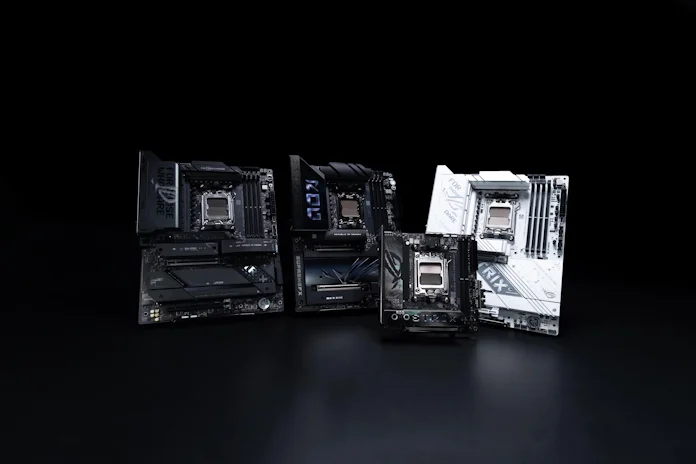When you start to build a PC, one of the first decisions you’ll face is choosing the right motherboard size. Over the years, motherboard form factors have evolved to offer a range of options tailored to various needs, from powerful gaming rigs to compact home theater machines. Here, we’ll answer common questions about motherboard sizes and explore the main options available today so that you can make an informed choice.
Why does motherboard size matter?
First and foremost, motherboard size matters due to parts compatibility. An extra-large EATX motherboard won’t even fit inside the confines of a compact microATX chassis. And while you can install a petite Mini-ITX board into a large chassis, you’ll be missing out on the chief advantage of the smaller board size while limiting your expansion options and potentially complicating your build process.
To make sure that you have an easy time finding compatible parts, PC components manufacturers typically follow industry configuration specifications, and we use the same language for both motherboard and PC cases. So we offer ATX motherboards, which are all the same size and have mounting points in all the same places, and we also offer ATX PC cases, which are configured for easy installation of an ATX motherboard.
What motherboard sizes are available?
We’ll go through these options in more detail in just a moment, but here’s a quick overview of the common motherboard sizes that you can pick from as you’re building a PC in 2025.
- ATX motherboards. The most common option, ATX motherboards are the standard choice for PC builders in most contexts. You’ll have the most options to pick from with ATX, so if you’re not too concerned about the size of your PC and you want easy parts compatibility, ATX should be your first choice.
- MicroATX motherboards. A bit shorter than ATX motherboards, microATX boards don’t have as many expansion options but allow for high-performance yet compact builds.
- Mini-ITX motherboards. This is the most common choice for enthusiasts building small-form-factor PCs.
- EATX motherboards. These monster boards are even larger than their ATX counterparts. Typically, these are fully loaded, premium motherboards designed for cutting-edge machines.
There are other options that you might run across, but these are the motherboard sizes that most PC builders select from in 2025.
The standard option: ATX motherboards
The ATX form factor was patented all the way back in 1995, and it remains the standard choice for many builders. Measuring 12 x 9.6 inches, ATX motherboards provide ample space for multiple expansion slots, allowing you to not only install a graphics card, but also another add-in board like a capture card or sound card. They typically offer four DIMM slots for RAM, extensive connectivity options, and robust power delivery systems. This makes them ideal for gamers, content creators, and professionals seeking high performance and expandability.
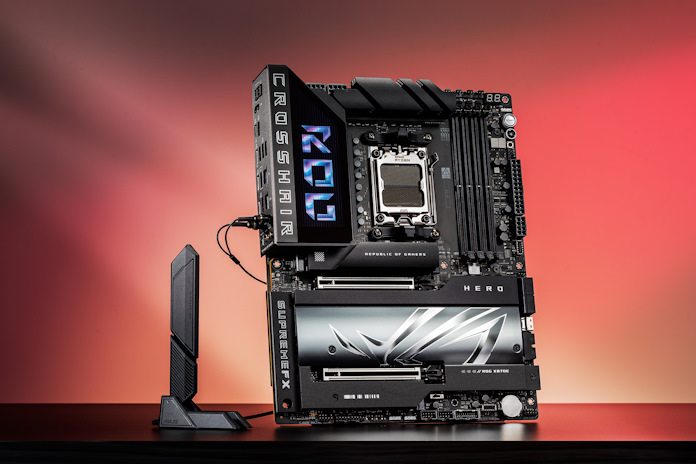
One of the reasons that ATX is such a popular motherboard size in 2025 is due to the size of today’s graphics cards. The cooling solutions on today’s graphics cards can be quite large, and it’ll be much easier to install the card if your case offers a bit of elbow room. That leads many PC builders to select a full-tower or mid-tower ATX PC case — and if you’re getting an ATX case, you might as well pair it with an ATX motherboard.
Since ATX is such a popular choice, you’ll have plenty of options to choose from for your case and motherboard. That level of choice might be reason enough to go with ATX over the other available motherboard sizes, as it all but ensures that you’ll find what you’re looking for if you have a specific aesthetic in mind or a very exact checklist for the capabilities of your motherboard.
More compact but not tiny: microATX motherboards
It used to be much more common for PC builders to install a variety of add-in cards. But now that audio hardware, networking options, and storage slots are all typically built right into your motherboard, many PC builders don’t need a wide range of expansion slots on their motherboards. For them, a single PCIe x16 slot for their graphics card is sufficient.

For these builders, microATX motherboards are a tempting choice. Balancing performance with a more compact design, microATX motherboards measure 9.6 x 9.6 inches. They offer up to four expansion slots and usually come with four DIMM slots, similar to their ATX counterparts. While they may have fewer PCIe slots, they still provide sufficient connectivity for most users.
Opting for a microATX board gives you one key advantage over an ATX model: it can fit comfortably in a smaller case. A microATX PC case like the ASUS Prime AP201 doesn’t demand much space on your desk, yet it’s compatible with graphics cards up to 338mm long and standard ATX power supplies. If you’re looking for a more streamlined setup that doesn’t sacrifice much in terms of performance or expandability, microATX should be one of the top motherboard sizes on your list.
Your go-to pick for a small form factor build: Mini-ITX motherboards
When space is at a premium, Mini-ITX motherboards come into play. Measuring a compact 6.7 x 6.7 inches, these boards can rest comfortably on the palm of your hand. They’re perfect for small form factor builds, such as home theater PCs or minimalist gaming systems. They typically feature a single PCIe slot and two DIMM slots, limiting expansion but still supporting powerful CPUs and GPUs. Advancements in technology have allowed Mini-ITX boards to pack impressive performance into their tiny frames, though builders should be mindful of potential heat management challenges due to the compact layout.
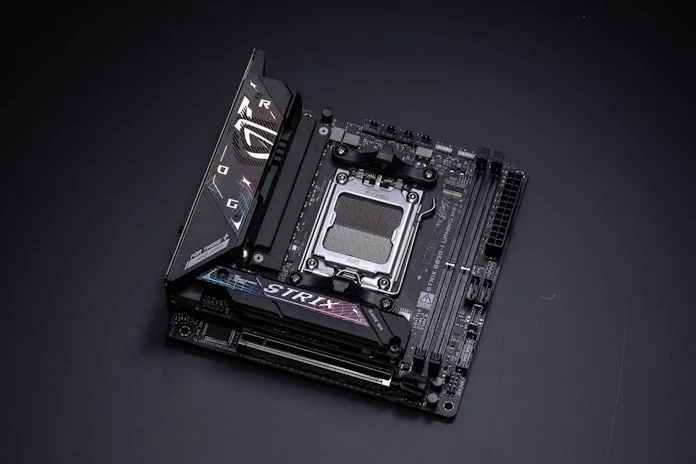
If you plan to build a Mini-ITX PC, you should be aware that it takes a bit more planning to make sure that all your parts fit together. The NVIDIA GeForce SFF-Ready Program simplifies the process of building a space-saving PC by labeling SFF-Ready cases and graphics cards. When you select a chassis and a GPU that are both SFF-Ready, you can be confident they’ll be compatible and you’ll have a streamlined building experience. Compact yet powerful ASUS Prime graphics cards ensure that you can get the gaming performance you need for such a machine.
Even smaller options
For some applications, even Mini-ITX motherboards aren’t quite small enough. If you’re looking to embed the functionality of a PC into something like a smart retail solution, medical cart, or manufacturing floor device, a standalone motherboard from our NUC lineup might be just what you need.
ASUS NUCs are ultracompact Mini-PCs. They vary in size, but they’re commonly only 4.6 inches on a side — for the entire PC. You can buy ASUS NUCs as complete PCs, barebones kits, or standalone boards, so check these options out if you need a solution that’s even smaller than Mini-ITX.
When size isn’t an issue: EATX motherboards
Out of all the motherboard sizes available for consumer PCs, EATX is the biggest. EATX isn’t quite as standardized as the other form factors, so you’ll have to account for some variation in size between different EATX motherboards. That said, EATX motherboards are always wider than standard ATX boards, so you’ll need a deeper chassis that’s able to accommodate the extra width.
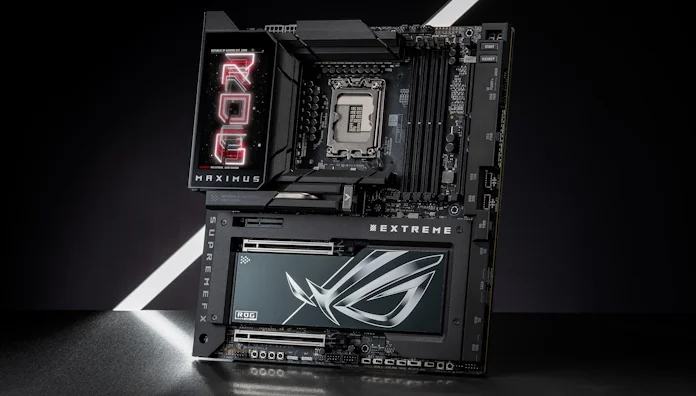
What do you get with that extra-wide EATX motherboard? Typically, you get everything. The EATX motherboards compatible with standard desktop CPUs from Intel and AMD are usually the highest-end models from that motherboard series. Loaded up with a full selection of the connectivity, storage, and expansion options available with the CPU series, EATX motherboards are your premium choice for showcase builds and chart-topping performance.
Wielded by workstations: CEB and EEB motherboards
When you’re building a workstation or value server, you need specialized hardware. AMD Ryzen Threadripper and Intel Xeon processors deliver astonishing core counts for advanced computing applications like software development, machine learning, professional content creation, and more. Folks building such PCs often deck them out with massive quantities of RAM and multiple graphics cards.
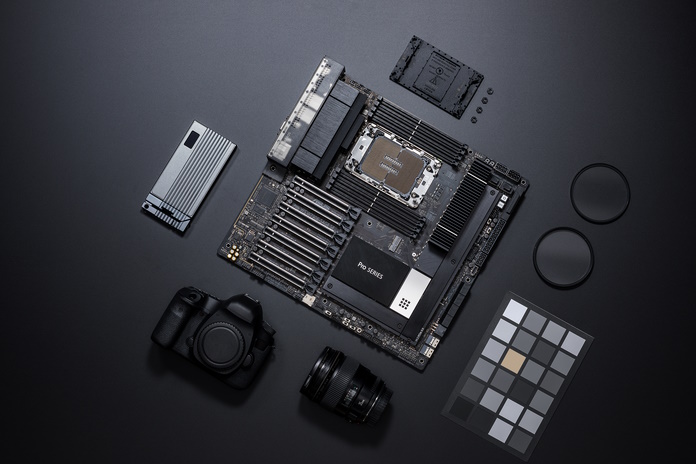
All this means that these builders need motherboards equipped with not only one or more of the advanced sockets necessary for workstation-class CPUs, but also eight DIMM slots and multiple (if not many) PCIe x16 slots for an array of graphics cards. CEB and EEB motherboard sizes are the common types here, though there are other options.
Pick between the motherboard sizes available to you in 2025
In 2025, the array of motherboard sizes ensures that there’s a perfect fit for every builder’s needs. Whether you’re aiming for a powerhouse gaming rig or a sleek, unobtrusive media center, understanding the strengths and limitations of each form factor will guide you to the ideal choice for your next PC build.
Now that you know what motherboard size you’re looking for, you’re ready to start considering options. If you’re building a PC around an AMD processor, check out our enthusiast-grade X870E/X870 motherboard lineup or our family of mainstream B850 motherboards. Prefer Intel’s chips instead? Grab an overclocking-ready Z890 motherboard or go big on value with a B860 motherboard.

